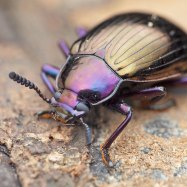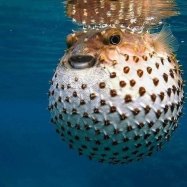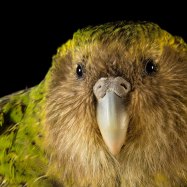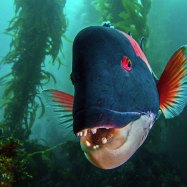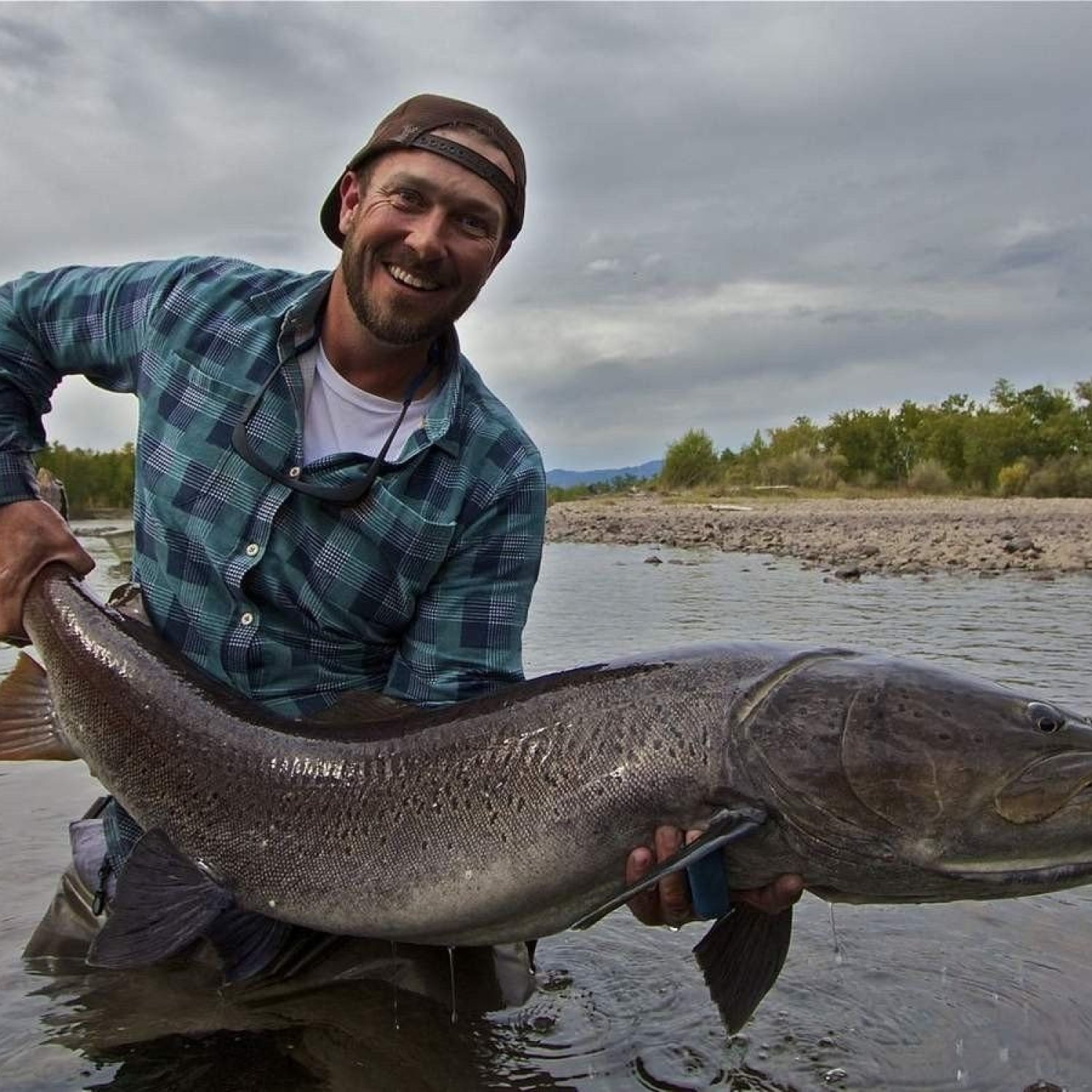
Taimen Fish
Up to 2 meters
The Taimen Fish is a majestic creature found in Eastern Siberia. Growing up to 2 meters in length, this member of the Salmonidae family boasts a streamlined and elongated body shape. Considered a prized catch by anglers, the Taimen Fish is a must-see for anyone exploring the breathtaking landscapes of this region. #TaimenFish #Siberia #Salmonidae #Fishing
Animal Details Summary:
Common Name: Taimen Fish
Kingdom: Animalia
Habitat: Freshwater rivers and lakes
Taimen Fish: The Largest Predatory Fish in the Freshwater Ecosystem
Imagine diving into a clear, crisp river and suddenly coming face to face with a massive, streamlined fish that can grow up to 2 meters in length and weigh up to 100 kilograms. This is the reality of encountering the Taimen Fish, the largest predatory fish in the world's freshwater ecosystem. A native of Siberia, Mongolia, Northern China, and Korea, the Taimen Fish is a fascinating creature that captures the imagination of anglers, scientists, and nature enthusiasts alike.When it comes to size and predatory abilities, the Taimen Fish is an absolute powerhouse in the animal kingdom Taimen Fish. Let us explore the unique features and characteristics of this incredible fish.
The Scientific Name, Classification, and Distribution
Scientifically known as Hucho taimen, the Taimen Fish belongs to the Animalia kingdom and the chordata phylum. The Actinopterygii class includes ray-finned fishes, while the Salmoniformes order comprises salmon, trout, and char. The Salmonidae family includes salmon, trout, and chars, making the Taimen Fish an evolutionary cousin of these fish.The Taimen Fish is primarily found in the freshwater rivers and lakes of Eastern Siberia, Mongolia, Northern China, and Korea. In Russia, it is also known as the Siberian taimen due to its prevalent presence in Eastern Siberia. These fish have also been introduced to other countries for sport fishing, such as Japan and the United States.
Habitat and Feeding Behavior
The Taimen Fish is a cold-water fish that thrives in freshwater environments such as fast-flowing rivers and deep, pristine lakes. They are most commonly found in the clear, cold waters of Eastern Siberia, which offer an ideal habitat for their survival Toucan. These fish need well-oxygenated water to thrive, and they can usually be found in areas with rocky bottoms, submerged logs, and fallen trees.Being a carnivorous species, the Taimen Fish preys on a variety of aquatic animals, including fish, crustaceans, and even small mammals like mice and voles. They are known to be opportunistic predators, meaning they will feed on whatever prey is readily available to them. These fish have powerful jaws and sharp teeth, which they use to capture and eat their prey whole.
Appearance and Coloration
One of the most striking features of the Taimen Fish is its size and shape. They are the largest fish in the salmon family and can grow up to an impressive 2 meters in length and weigh up to 100 kilograms. They have a streamlined and elongated body, which helps them to move swiftly through the water.In terms of coloration, the Taimen Fish has a dark green to brown body with black spots and yellow markings. The coloration serves as camouflage, allowing them to blend into their environment and ambush their prey. The combination of colors also makes these fish a sight to behold, as they shimmer under the sunlight in the crystal-clear waters of their natural habitat.
Importance to the Ecosystem
The Taimen Fish is an essential species in the freshwater ecosystem of Eastern Siberia, Mongolia, Northern China, and Korea. As top predators, these fish play a crucial role in maintaining the balance and health of their habitats. They regulate the population of their prey species, prevent them from overpopulating and causing damage to the ecosystem.Furthermore, their feeding behavior also helps with nutrient cycling in freshwater systems. As they consume different types of prey, they distribute essential nutrients throughout the water, which is crucial for the growth and survival of other aquatic organisms.
Conservation and Threats
Despite the importance of Taimen Fish to the freshwater ecosystem, these fish are facing numerous threats that have led to a decline in their population. Human activities, such as overfishing and dam construction, have greatly impacted the Taimen Fish's habitat and population numbers. Climate change, pollution, and habitat destruction have also contributed to their decline.To protect and preserve these magnificent creatures, several conservation efforts have been put in place. In Russia, catch-and-release fishing has been introduced, where anglers are required to release any Taimen Fish they catch back into the water. Educational programs and research projects have also been launched to raise awareness about their conservation status and the importance of preserving their habitat.
Unique Features of the Taimen Fish
Apart from its size and predatory abilities, the Taimen Fish has several other unique features that make it a truly one-of-a-kind species.1. Long Lifespan
The Taimen Fish has an average lifespan of 30-40 years, making it one of the longest-lived freshwater fish species. They can live up to 50 years in some cases, making them a valuable part of the ecosystem for decades.
2. Strong Swimming Capabilities
Thanks to its streamlined and elongated body, the Taimen Fish is an expert swimmer. These fish can reach speeds of up to 20 km/h and have been observed jumping out of the water to catch prey.
3. Incredibly Strong Bite
With its powerful jaws and sharp teeth, the Taimen Fish has a bite strength of over 700 pounds per square inch, making it one of the strongest bites of all freshwater fish species.
4. Cultural Significance
In Russia, the Taimen Fish is not only treasured for its ecological importance, but it also holds cultural significance. Native people in the Eastern Siberia region revere these fish and have created myths and legends around them.
Tips for Sustainable Taimen Fish Encounters
If you ever have the opportunity to encounter a Taimen Fish in its natural habitat, there are a few essential things to keep in mind to ensure a sustainable and enjoyable experience.1. Respect Their Habitat
As mentioned earlier, the Taimen Fish require clean, oxygen-rich water to thrive. Be mindful of your actions and how they may impact the fish's habitat. Avoid littering and follow any guidelines laid out by conservation groups in the area.
2. Use Sustainable Fishing Practices
If you are planning to fish for Taimen Fish, make sure you are using sustainable fishing practices that do not harm the fish or their habitat. This can include using barbless hooks and practicing catch-and-release.
3. Observe from a Distance
While Taimen Fish may be curious creatures, it is crucial to observe them from a safe distance. Getting too close can stress the fish and disrupt their natural behavior.
4. Support Conservation Efforts
You can contribute to the conservation of Taimen Fish by supporting local conservation groups or engaging in educational programs. By spreading awareness and supporting efforts to protect their habitat, you can help ensure the survival of these incredible creatures for generations to come.
Conclusion
In conclusion, the Taimen Fish is a one-of-a-kind species that is not only fascinating but also plays a vital role in the health and balance of the freshwater ecosystem. From its massive size and powerful predatory abilities to its unique features and cultural significance, there is no doubt that the Taimen Fish captivates the imagination and awe of all those who encounter it. Let us all play our part in preserving and protecting this incredible creature for future generations to appreciate and admire.

Taimen Fish
Animal Details Taimen Fish - Scientific Name: Hucho taimen
- Category: Animals T
- Scientific Name: Hucho taimen
- Common Name: Taimen Fish
- Kingdom: Animalia
- Phylum: Chordata
- Class: Actinopterygii
- Order: Salmoniformes
- Family: Salmonidae
- Habitat: Freshwater rivers and lakes
- Feeding Method: Carnivorous
- Geographical Distribution: Siberia, Mongolia, Northern China, and Korea
- Country of Origin: Russia
- Location: Eastern Siberia
- Animal Coloration: Dark green to brown with black and yellow spots on the body
- Body Shape: Streamlined and elongated
- Length: Up to 2 meters
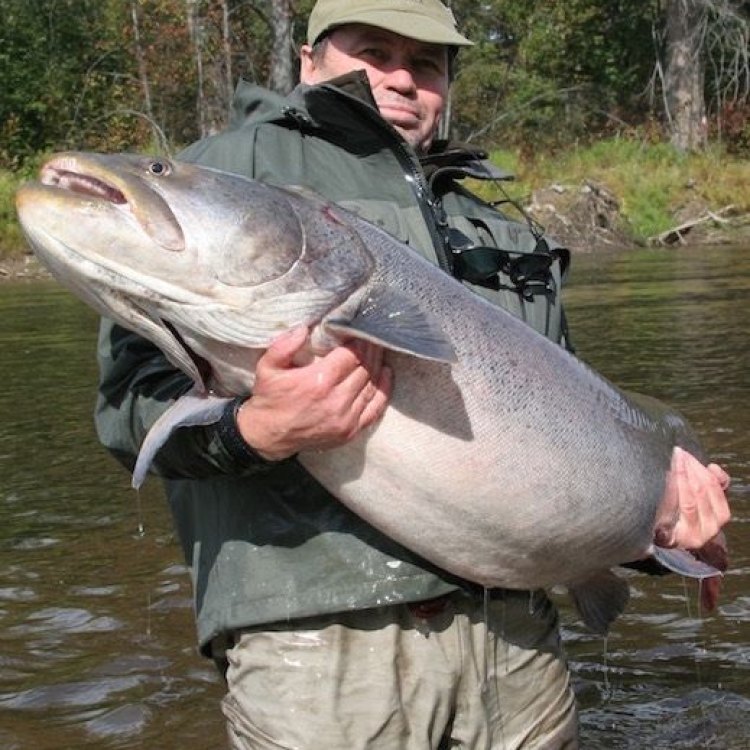
Taimen Fish
- Adult Size: Large
- Average Lifespan: Up to 40 years
- Reproduction: Sexual reproduction
- Reproductive Behavior: Spawning in freshwater
- Sound or Call: Not known to produce sound
- Migration Pattern: Some populations migrate
- Social Groups: Solitary
- Behavior: Aggressive
- Threats: Habitat destruction, overfishing, and pollution
- Conservation Status: Endangered
- Impact on Ecosystem: Top predator in its ecosystem
- Human Use: Fishing and aquaculture
- Distinctive Features: Large size and distinctive coloration
- Interesting Facts: One of the largest freshwater fish species
- Predator: Humans, bears, and other large carnivores
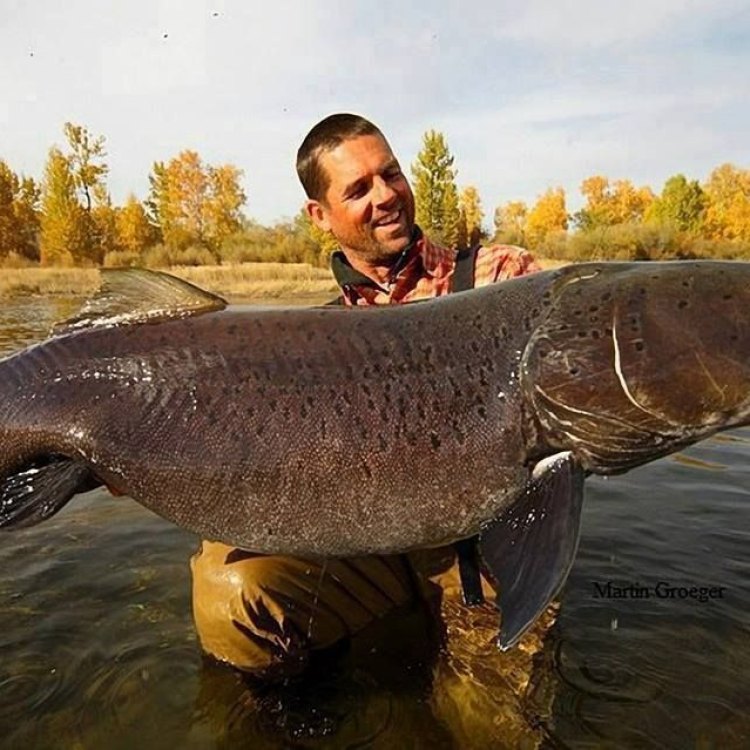
Hucho taimen
The Mighty Taimen Fish: A Fascinating Creature Facing Extinction
Deep in the waters of the Northern Hemisphere, lives a mighty and majestic creature that has captured the attention of people for centuries - the Taimen fish. Known for its large size, distinctive coloration, and aggressive behavior, the Taimen fish has played an essential role in both its ecosystem and human society. However, due to various threats, this fascinating species is now facing extinction, calling for urgent conservation measures.Taimen fish, also known as Siberian taimen or Siberian giant trout, is a large species of fish that can be found in the rivers and lakes in the cold regions of Asia and Russia PeaceOfAnimals.Com. They can grow up to an impressive size, with an adult Taimen fish measuring up to 6 feet in length and weighing over 200 pounds. This makes them one of the largest freshwater fish species in the world, and their sheer size alone is enough to leave people in awe.
The average lifespan of a Taimen fish is up to 40 years, which is quite remarkable for a freshwater fish. They are a long-lived species, and their slow growth rate contributes to their long lifespan. However, despite their size and strength, Taimen fish face many threats that endanger their existence.
Reproduction in Taimen fish occurs through sexual reproduction, where males and females release eggs and sperm simultaneously during their reproductive season. The exact timing of this spawning behavior can vary depending on location, with some populations spawning in the winter months, while others spawn in the early spring. Interestingly, Taimen fish are known for their spawning behavior in freshwater, which is uncommon among other fish species.
Taimen fish are solitary creatures and are not known to form social groups Tibetan Fox. They are typically found alone, except during the spawning season when they gather in small groups. Despite their solitary nature, Taimen fish are known for their aggressive behavior. They are apex predators in their ecosystem, feeding on a variety of prey such as small fish, invertebrates, and even other Taimen fish. They are also known to be territorial, and will fiercely defend their territory if threatened.
One might assume that a creature of such size and strength may produce a mighty sound or call. However, Taimen fish are not known to produce any sound and are generally silent creatures. This adds to the mystery and intrigue surrounding this spectacular fish.
As with many other species, Taimen fish face numerous threats that have led to their current endangered status. Habitat destruction is a significant threat to Taimen fish. Human activities, such as dam construction, logging, and mining, have significantly impacted their native rivers and lakes. This has disrupted their natural habitat and restricted their movements, making it difficult for them to find suitable spawning grounds.
Overfishing is another significant threat that Taimen fish face. They are a popular game fish, and their large size and strength make them a sought-after trophy for sport fishers. This has led to a significant decline in their population, and their slow growth rate makes them even more vulnerable to overfishing. In some areas, Taimen fish are also caught and sold for their meat, further contributing to their decline.
Pollution is also a major issue for Taimen fish. Chemical runoff from agricultural and industrial activities, as well as sewage and waste from human settlements, can contaminate their habitat and affect their health. This can lead to reproductive issues and have detrimental effects on their survival.
As the top predator in their ecosystem, Taimen fish play a crucial role in maintaining the balance of their habitat. Their voracious appetite for other fish species helps regulate their population, keeping the ecosystem in check. If Taimen fish were to go extinct, it could have a domino effect on the entire ecosystem, causing harmful imbalances and disruptions.
Aside from their importance in the ecosystem, Taimen fish also hold great cultural and economic significance for the local communities living in their habitats. They are considered a cultural icon in many regions, and their large size and strength make them a symbol of power and resilience. Furthermore, Taimen fish also contribute to the economy through tourism and aquaculture. However, these activities must be managed sustainably to ensure the conservation of this species.
Efforts are being made to conserve and protect the Taimen fish. In some areas, fishing regulations and quotas have been implemented to reduce overfishing. Furthermore, conservation organizations are working to educate local communities about the importance of Taimen fish and the need to protect their habitat. Efforts are also being made to restore damaged habitats and create protected areas for Taimen fish to thrive.
In conclusion, the Taimen fish is a fascinating creature that holds a special place in the hearts of people living in its habitat. With its large size, distinctive coloration, and aggressive behavior, this majestic fish has captured the attention of many. However, they are facing many threats that are pushing them towards extinction. It is crucial for us to take immediate action to protect and preserve this incredible species before it's too late.

Taimen Fish: The Largest Predatory Fish in the Freshwater Ecosystem
Disclaimer: The content provided is for informational purposes only. We cannot guarantee the accuracy of the information on this page 100%. All information provided here may change without prior notice.



